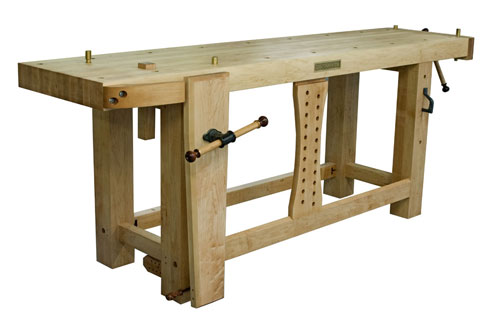How to Build a Roubo Workbench

Workbench is a tough table over which manual work is done. They vary from simple flat surfaces to large complex designs that have provisions for storage of many tools at different angles.
Workbench is the most prominent piece of furniture in your shop and one of the first few things people notice about you. It is recommended to build a large work bench so that you can manage most of your work on the table. It is the centre figure in the shop and there is no harm in spending a few extra bucks on the table.
Instructions
-
1
The original Roubo work bench was built way back in 18th century, so it was built quite heavy. It has straight legs generally but some designers set rear legs at an angle of about 10 or 12 degrees towards the centre of the table. Large, heavy single piece slabs are placed on top of these legs to complete the Roubo table.
-
2
With the passage of time the design got refined, and now instead of using one big heavy slab, most work benches use laminated slabs of wood for both top and the legs. There are many different styles and types followed in the construction of Roube table these days, so take your time in locking in the choice of table.
-
3
There are many types of wood that can be used in the making of the work table. The commonly used are the maple and beech wood. Other woods such as oak, cherry, walnut and pine all can be used in the making of your worktable.
-
4
Purchase required amount of wood and let it sit in your shop for a while to get acquainted with the new environment. You may cut the wood pieces to rough size or just let them sit there in raw form.
-
5
Make a 3-dimensional diagram of your bench in computer software. This will give you the exact sizes of all the pieces to be used in the construction of work table. Apply glue over the surface of wood which is to be laminated, and use clamps to hold them in their place.
-
6
Cut the lumber in pieces according to the diagram, it is recommended to cut the legs about a quarter of an inch longer than the actual size to cater for the material that will be wasted in the filing process.







